How to Become a TikTok Affiliate: The 2025 Guide for Content Creators and Brands
14th
August, 2025
Influencer Marketing
Amazon Marketplace
Artificial Intelligence
TikTok Tips
TikTok has exploded to over a billion active users worldwide, transforming from a fun video app into a serious marketing channel. This makes it a goldmine for affiliate marketing – a strategy where content creators (often micro-influencers) partner with brands to promote products and earn commissions on any resulting sales. In this comprehensive guide, we’ll break down what TikTok affiliate marketing is, why it’s so powerful for both e-commerce brands (like Amazon sellers) and creators, and how to get started step-by-step. We’ll also cover pro tips, common mistakes to avoid, and how authentic UGC (user-generated content) on TikTok can drive real results. Let’s dive in!
What is a TikTok Affiliate (and How Does TikTok Affiliate Marketing Work)?
A TikTok affiliate is an individual creator or influencer who promotes a brand’s products on TikTok using special trackable links or promo codes, earning a commission for each sale generated. In practice, it works like this:
- Join an affiliate program: You apply to a brand’s affiliate program or a marketplace (more on these below) and get a unique referral link or code for a product.
- Promote in TikTok content: You create engaging TikTok videos featuring that product – whether it’s a demo, unboxing, or a fun skit – and include the affiliate link (for example, in your bio or a TikTok Shop tag) or mention the code in the caption.
- Earn commissions on sales: When viewers watch your TikTok and click through to buy the product, you earn a percentage of the sale (or a flat fee) as a reward for influencing the purchase.
In a nutshell, TikTok affiliate marketing lets creators monetize their creativity, while brands get authentic word-of-mouth promotion. It’s a win-win: creators earn passive income for recommendations, and brands reach new customers through relatable content. Even micro-influencers (those with a few thousand followers) can be effective affiliates – their niche audiences trust their suggestions, which can drive surprisingly strong sales.
Why TikTok is Perfect for Affiliate Marketing
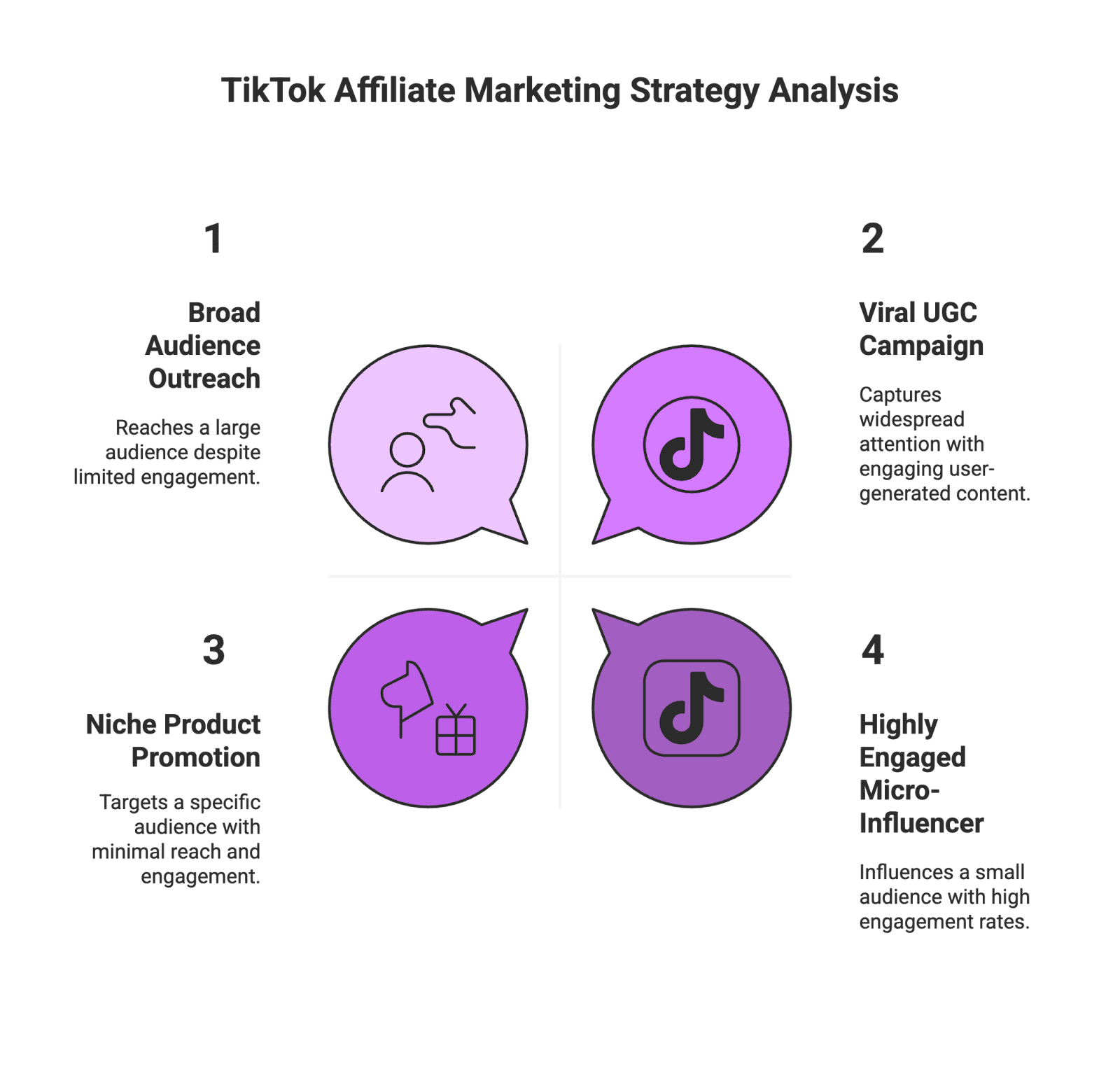
TikTok isn’t just another social network – it’s a viral content engine. Several key factors make TikTok an ideal platform for affiliate marketing in 2025:
- Massive & Diverse User Base: TikTok has over 1.6 billion users globally with at least a billion active. Its audience spans all ages (with particularly strong Gen Z and Millennial presence) and niches. This wide reach means whether you’re promoting beauty gadgets or camping gear, you can find an audience on TikTok. Brands from indie Shopify stores to Amazon sellers can access huge markets through TikTok affiliates.
- High Engagement & Viral Potential: TikTok users are highly engaged, spending nearly an hour per day on the app on average. Thanks to TikTok’s algorithm, any video can go viral – it doesn’t matter if you have 100 followers or 100,000. The algorithm promotes content based on interest and engagement, not just follower count, leveling the playing field. This gives affiliate marketers a chance to reach millions organically. Even better, TikTok’s engagement rates far outshine other platforms – especially for micro influencers. For example, TikTok creators with under 5k followers average about 15% engagement, versus only ~4% on Instagram.
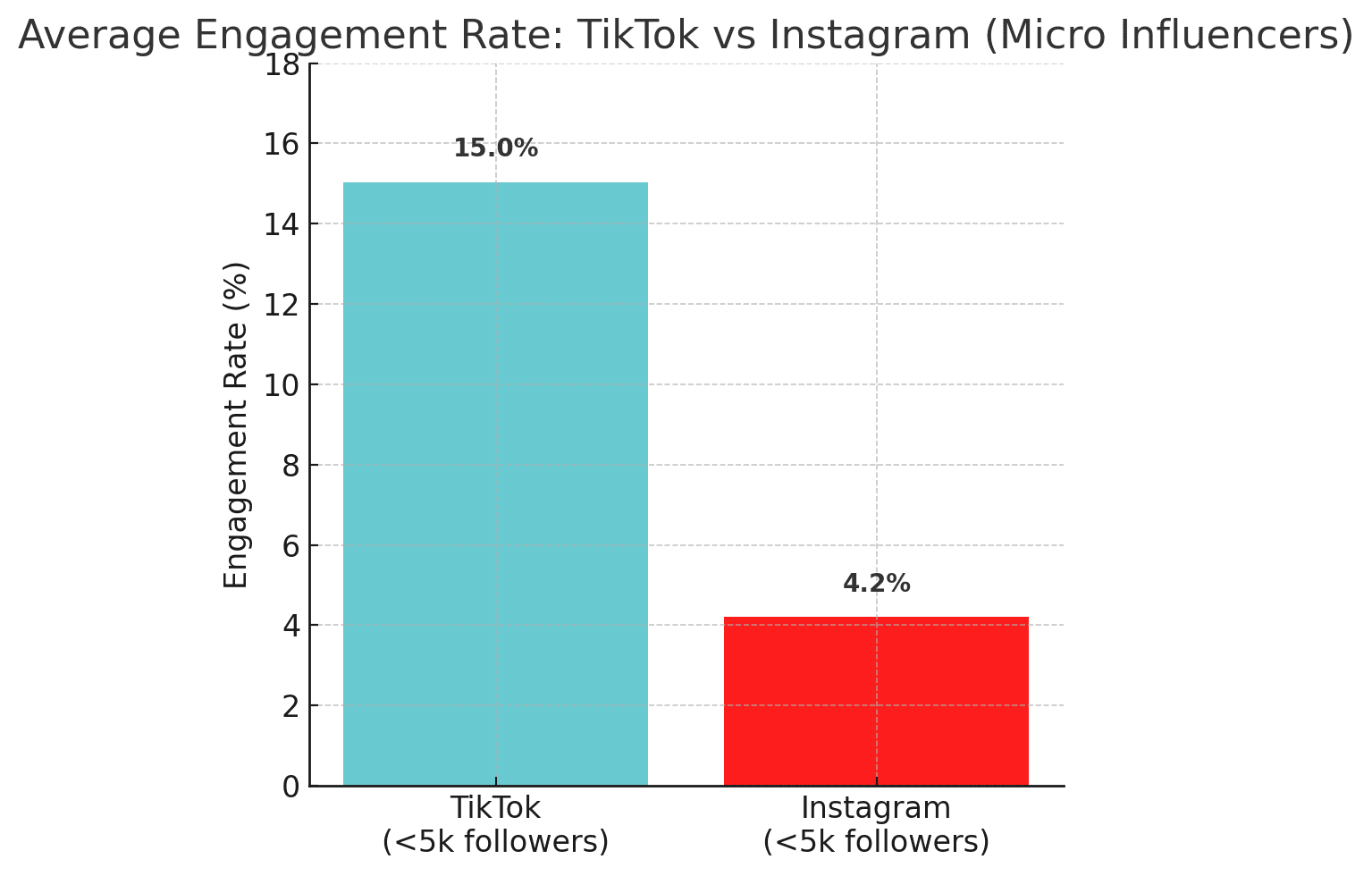
TikTok’s micro-influencers enjoy far higher engagement (around 15%) than their Instagram counterparts (~4%), meaning TikTok content often reaches and influences more people. Higher engagement = more eyes on your affiliate promos, which can translate to more sales.
- Authentic, Creative Content (UGC): TikTok is all about real, entertaining short-form videos. Content doesn’t feel like polished ads – it feels like user-generated content (which it is!), made by everyday people. This authenticity is a huge advantage for affiliate marketing. Creators have creative freedom to showcase products in a relatable way, whether through storytelling, humor, or personal testimonial. As a result, viewers trust these recommendations more than traditional ads. In fact, nearly 47% of users say TikTok influencer recommendations have helped them decide on purchases. Brands benefit because the influencer’s content doubles as marketing material – they can even repost these TikTok videos on their own channels as social proof. According to one expert analysis, influencer content doubles as UGC that adds authenticity to a brand’s marketing and provides a stream of creative assets a brand might never produce in-house. This is especially valuable for e-commerce brands and Amazon sellers, who often need lifestyle photos or demos of their products – partnering with TikTok creators essentially outsources this content creation to talented micro-influencers.
- Built-in E-Commerce Features: TikTok is rapidly integrating shopping features that make affiliate marketing even easier. With TikTok Shop, the platform now allows in-app product tagging and a whole affiliate marketplace for creators. You can tag products directly in your videos and viewers can purchase without even leaving the app. TikTok also supports adding one link in your bio (for all users with a Business account, and in Stories for those with 10k+ followers), so creators often use that to funnel viewers to a link landing page with multiple affiliate offers. Combined with TikTok’s new shoppable ads and Creator Marketplace, it’s clear TikTok is embracing social commerce. For affiliates, this means a smoother path from content to conversion.
- Trends and Algorithm Boosts: TikTok’s culture of trends, challenges, and hashtags can rapidly amplify an affiliate message. A clever video following a trending format or sound can catch on and get tens of thousands of views overnight. This viral “For You Page” exposure can lead to a surge in affiliate link clicks that would be hard to achieve on other platforms. Plus, TikTok’s algorithm doesn’t require you to pay to reach your audience (unlike some social networks) – organic reach is still strong if your content resonates.
In short, TikTok offers a potent mix of scale, engagement, and content creativity that affiliate marketers dream of. But before you jump in, let’s weigh some pros and cons.
Pros and Cons of TikTok Affiliate Marketing
Why should creators and brands consider TikTok for affiliate marketing? Here are some advantages and a few challenges to keep in mind:
Pros:
- Huge & Active Audience: TikTok’s global reach and high user activity mean more potential customers. In 2024, the average US adult spent 58.4 minutes a day on TikTok – more time than on many competing apps. More time spent = more chances your affiliate content gets seen.
- High Engagement Rates: TikTok content often sees far better engagement than other platforms. As noted, micro influencers on TikTok can see ~15% engagement from their followers, several times higher than on Instagram. Higher engagement can lead to higher conversion rates for affiliate offers.
- Viral Exposure Potential: Because TikTok’s algorithm can blast a video to millions of viewers if it’s engaging, affiliates have a chance at viral hits. A single creative video can generate a spike in traffic and sales overnight – something much harder to achieve on older platforms. This virality lowers the barrier for new creators to succeed; you don’t need years of follower-building to make an impact.
- Authenticity Sells: TikTok’s informal style makes ads feel more like recommendations from a friend. This authenticity can directly translate into sales. Many users admit to making impulsive purchases on TikTok after seeing a creator’s video (59% of users, according to one survey). Unlike a glossy TV ad, a genuine TikTok review or demonstration builds trust and “FOMO” (fear of missing out) effectively.
- Low Cost, Performance-Based Marketing (for Brands): From a brand or e-commerce seller perspective, affiliate marketing on TikTok is relatively low risk – you typically pay commissions only when a sale occurs. This performance-based model means you aren’t shelling out huge fees upfront for uncertain returns. Partnering with a network of micro influencers can generate lots of diverse content (UGC) and steady sales, all with a pay-for-results approach. It’s cost-effective marketing, especially for smaller brands.
Cons:
- Strict Content Guidelines: TikTok has pretty tight community guidelines and ad policies. Certain product categories (e.g. alcohol, adult products, financial services) face restrictions on TikTok. If your affiliate niche falls into a “gray area,” you might find your content or links get removed. Even if not, overly salesy content can be flagged or just perform poorly – TikTok users dislike anything that feels like spam or an infomercial. Affiliates need to be creative and genuine, not overly promotional, to avoid running afoul of the platform or the audience.
- Intense Competition: With millions of creators vying for attention, TikTok can feel like an ocean of content. Everyone wants to go viral and profit from trending products, so some niches get saturated quickly. You might be promoting the same Amazon must-have gadget as 50 other people this week. This competition means you must find a way to stand out (unique angle, better storytelling, higher production quality, or targeting a specific sub-niche).
- Short Content Lifespan: TikTok moves fast. Trends come and go within days, and the algorithm’s interest in a video can be fleeting. An affiliate video might blow up and then get buried in a user’s feed within a week. Unlike YouTube (where a tutorial can keep getting search traffic for years) or a blog post that ranks on Google, TikTok content has a shorter shelf-life. This means affiliates need to post consistently and ride new trends to maintain revenue – a one-hit wonder video is not a long-term strategy. It’s also hard to predict which video will go viral, so there’s a bit of luck involved alongside skill.
- Linking Limitations: If you’re not using the TikTok Shop features, getting viewers from TikTok to the actual product link requires extra steps. TikTok (for most users) doesn’t allow clickable links in video descriptions, and only one link in your bio. This means you often have to direct people via your bio link or comments, which introduces friction. You might use a link aggregator (like Linktree or Linkpop) to host multiple affiliate links on one page, but viewers still have to click to your profile, then to the link – each extra step can lose some potential buyers. The introduction of TikTok Shop and product tagging is helping solve this, but it’s something to consider if you plan to just drop Amazon affiliate links.
- Learning Curve & Effort: Succeeding on TikTok as an affiliate isn’t “easy money.” It requires understanding TikTok’s unique content style – which might mean learning video editing, keeping up with memes, responding to comments, and posting very regularly. You’ll need a mix of creative skills (to make appealing videos) and analytical skills (to track which content drives sales). For some brands or creators, this is a new and daunting challenge. And because of the points above (competition and short lifespan), consistency and adaptability are key – you can’t just post one video and call it a day.
Despite the challenges, the rewards can be huge if you crack the TikTok code. Next, we’ll get into exactly how you can become a TikTok affiliate and build a successful strategy from scratch.
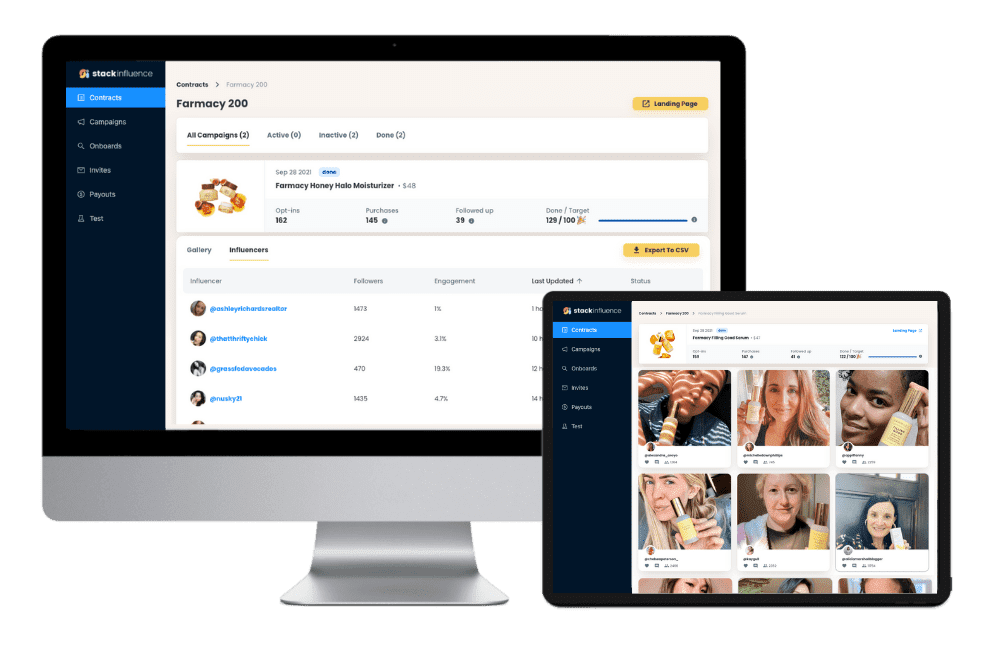
Unlock the Power of Micro Influencers and Elevate your Brand Today!
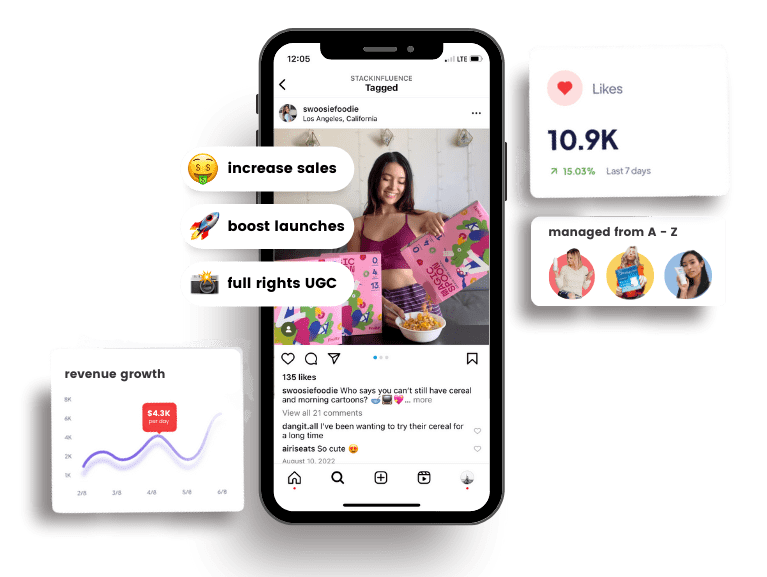
How to Become a TikTok Affiliate (Step-by-Step)
1. Define Your Niche and Audience
Successful affiliate marketing starts with a clear niche. With TikTok’s massive user base, you’ll do better by targeting a specific category or interest area that you’re familiar with. Ask yourself: What topics am I passionate or knowledgeable about? What kind of products would my content naturally feature?
If you already create TikTok content, analyze your profile – what themes get the most engagement? Align your affiliate promotions to those themes. For example, a fitness enthusiast on TikTok could focus on gym gear, supplements, or wellness products. A tech reviewer might stick to gadgets or gaming accessories. Picking a niche helps you build a consistent audience who trusts your expertise in that area, which in turn boosts conversion rates for related products.
Also consider your audience’s demographics and interests. TikTok skews younger, but has plenty of older users too. Tailor your product choices and content style to what resonates with your viewers. A deep understanding of your audience’s pain points and desires will let you select affiliate products that truly solve problems or bring joy to them – making a sale much more likely.
Pro Tip: If you’re starting from zero followers, spend some time growing your presence before pushing products. Post purely entertaining or valuable content in your niche to build up an audience. Only once you have engagement, sprinkle in affiliate promotions. TikTok users can sniff out an account that’s just there to sell stuff – don’t be that person. Lead with value and authenticity, then monetize gradually.
2. Set Up a Business Account and Optimized Profile
To leverage all the features for affiliates, you’ll want to use a TikTok Business Account (which is free to switch on in settings). Business accounts (or Creator accounts, for those who qualify) unlock the ability to add a link in your bio – a crucial tool for affiliate marketing. Without a clickable bio link, it’s much harder to direct TikTok viewers to a product page. So, convert your personal account to a business account early on.
Next, optimize your profile to build credibility and funnel visitors to your links:
-
Profile Bio
Clearly state who you are and what you do. If you’re focused on a niche, mention it. For instance: “Tech geek 🔌 | Gadget reviews & deals 🔥 | 💬 DM for collabs”. A concise bio helps users instantly get why they should follow you. You can also hint that you share product recommendations. However, avoid sounding too salesy – the goal is to come across as a relatable creator, not a storefront.
-
Profile Link
Add your affiliate landing page or Linktree here. This could be a single shopping link (maybe to your own website or a primary affiliate offer) or a link aggregator that lists multiple product links/codes. Many TikTok affiliates use services like Linktree or Shopify’s Linkpop to create a mobile-friendly page with buttons for each product they’re promoting. Make sure the link works and test it on mobile. Also, consider using URL shorteners or custom domain links for tracking clicks. Some affiliate programs (like Amazon Associates) provide tracking links you can monitor for clicks and sales.
-
Profile Picture and Name
Use a clear, friendly profile photo (or a logo if you’re a brand) and consider including your niche or persona in your display name. E.g., “Jane | Fitness Finds” or “TechDeals Tom”. This isn’t mandatory, but it can reinforce your branding.
3. Join Affiliate Programs (TikTok Shop, Amazon, and More)
Now for the core of it: getting your affiliate links. There are two main routes on TikTok:
Option A: TikTok’s Native Affiliate Program (TikTok Shop). TikTok Shop has an affiliate marketplace that connects creators and products inside the app. Here’s how it works in a nutshell:
To become a TikTok Shop affiliate, you typically need at least 5,000 followers (this is the threshold to join as a creator in many regions). Creators with fewer followers can sometimes join via special programs or by registering as a “seller” on TikTok Shop (even if you don’t have your own product to sell). The basic steps to get started with TikTok Shop affiliate are:
1. Register for TikTok Shop
You might sign up through the TikTok app’s Creator Tools section under “TikTok Shop” (if you see it available) or via TikTok’s website. In some cases you register as a TikTok Shop seller (don’t worry, you won’t actually need to sell your own products, but this gives you access to the affiliate Product Marketplace).
2. Browse the Product Marketplace
Once in, you can search a catalog of products that brands have made available for affiliate promotion. It’s like an online shop where you choose what you’d like to promote. You’ll see details like commission rate offered on each product. Pick products that align with your niche and that you genuinely think your audience will like. You can often request a free sample of the product through the platform, so you can create more authentic, hands-on content.
3. Get Your Affiliate Link/Tag
TikTok will provide a way to tag these products in your video. When you make a TikTok video, you can add the product from the TikTok Shop inventory you selected. This creates a special link or pop-up on your video that viewers can click to see the item and purchase in-app. TikTok tracks all this automatically.
4. Earn Commissions & Track Performance
TikTok Shop will show you stats on clicks and sales your content generated. Commissions vary but can be quite attractive (some products might offer 5%, some 20%+ of the sale price, depending on the brand’s offer). TikTok handles the payout of those commissions to you (usually through a linked bank account) after a certain period.
The beauty of the TikTok Shop affiliate route is the seamlessness – viewers can go from watching your video to buying within TikTok, which hugely reduces drop-off. It’s great for impulse buys. If you qualify for this program, absolutely take advantage of it, as it’s built for TikTok’s ecosystem.
Option B: External Affiliate Programs and Networks. Not every creator has access to TikTok Shop, and not every product is listed there. Many TikTok affiliates use traditional affiliate programs and just leverage TikTok as their traffic source. Some popular choices:
- Amazon Associates: Amazon’s affiliate program is one of the easiest ways to start because you can find virtually any product. A ton of TikTok creators, from beauty gurus to gadget reviewers, use Amazon affiliate links. For example, if you review a cool kitchen gadget on TikTok, you can put an Amazon affiliate link for it in your bio (or a Linktree). When viewers click and buy on Amazon, you get a commission (usually 1-5% for most categories). Amazon sellers love this because it drives sales to their listings. Keep in mind, Amazon has rules – you generally can’t put Amazon affiliate links directly in a TikTok caption, and you should disclose that you may earn a commission. But Amazon affiliate + TikTok can be a powerful combo for monetization.
- Other Affiliate Networks: Dozens of affiliate networks (ClickBank, ShareASale, CJ, Rakuten, etc.) offer products and services you might promote. You could find an affiliate offer for an online course, a fashion brand’s website, or a new gadget’s pre-order page. The process is similar: join the program, get a link, and direct TikTok viewers to it (usually via your bio or a pinned comment). Some brands also run their own affiliate programs you can join independently. For instance, many Shopify e-commerce brands will let influencers sign up to be affiliates (sometimes these opportunities are listed in their bio or website, or you can ask).
- Influencer Marketing Platforms: While not “affiliate networks” per se, there are platforms that connect micro-influencers with brands for gifting or paid collaborations which can include affiliate-like arrangements (like pay-per-sale). For example, Stack Influence is a micro-influencer platform geared toward Amazon and e-commerce sellers. Brands on such platforms often give creators free products and a unique discount code or link to share; the creator earns commissions on any sales that result, similar to affiliate marketing. These platforms streamline finding brands to partner with, especially for smaller creators. If you’re a brand, such platforms (including Stack Influence and others) help automate recruiting a bunch of micro-influencers to promote your product on TikTok and other channels – a scalable way to run an affiliate-style campaign.
4. Create Engaging TikTok Content (That Doesn’t Feel Like an Ad)
Now the fun part: making TikToks that showcase your chosen products. To succeed here, remember that TikTok is an entertainment platform first. Your videos need to grab attention, provide value or enjoyment, and then slip in the product promotion naturally. Here are some content tips for affiliate TikToks:
-
Hook Viewers Immediately
The first 2-3 seconds of your video determine whether someone scrolls past or not. Start with an intriguing question, a bold statement, or an eye-catching scene. For example: “I tried the viral blender bottle so you don’t have to – here’s what happened” or a quick demo of the product in action right as the video starts. This helps pique curiosity.
-
Tell a Story or Solve a Problem
Rather than a dry “review,” frame your product feature as a mini story or a solution. E.g., “I always struggled with back pain until I found this gadget…” and then show the product (like a posture corrector) and how it helped. Storytelling keeps people engaged and emotionally invested, which can drive them to check out the item.
-
Show the Product in Use
If possible, demonstrate the product. If it’s makeup, show a before/after or a quick tutorial. If it’s a kitchen gadget, film yourself actually using it to make a recipe. Visual proof speaks louder than words. Also, try to highlight benefits more than features – show outcomes (e.g., a tidy desk after using a cable organizer you promote, or a tasty meal from an air fryer).
-
Be Authentic and Personal
Share your genuine thoughts or reactions. If something surprised you about the product, let that show. TikTok viewers respond well to authenticity – even if it’s a sponsored/affiliate post, they appreciate honesty. If there are minor downsides to the product, you can mention one (“Wish I discovered this pan sooner, the only thing I’d change is the handle gets a bit hot, but overall it’s awesome”). Counterintuitive as it sounds, admitting a small flaw builds trust that you’re not just saying “It’s perfect!!!” to get sales. Obviously, only promote things you do like overall.
-
Include a Call-to-Action (CTA)
Toward the end of the video or in the caption, prompt viewers on what to do next: “Check my bio for the link” or “Use my code JANE20 for 20% off – it’s in the comments!” On TikTok, people often respond well to a subtle CTA. You can say in the video, “I’ll put the link in my bio if you want to snag one.” Don’t sound too desperate; make it casual. In your caption, you might write something like “Link in bio 🔗 if you’re curious! #amazonfinds”. TikTok also recently enabled a sticker you can add to videos for “Link in Bio” to nudge viewers.
Remember, the goal is to blend the product into content that’s enjoyable in its own right. If your TikTok video can stand on its own (even if someone isn’t interested in buying), you’re doing it right. That way it can get shares, likes, and broad reach – some of those viewers will be interested in the product and convert.
Finally, consistency is key. Plan a content schedule that you can stick to – whether that’s posting 3 times a week or daily. The more quality content you put out, the greater your chances of hitting a viral success that brings in affiliate revenue.

Unlock the Power of Micro Influencers and Elevate your Brand Today!

5. Leverage TikTok Features and Trends to Boost Reach
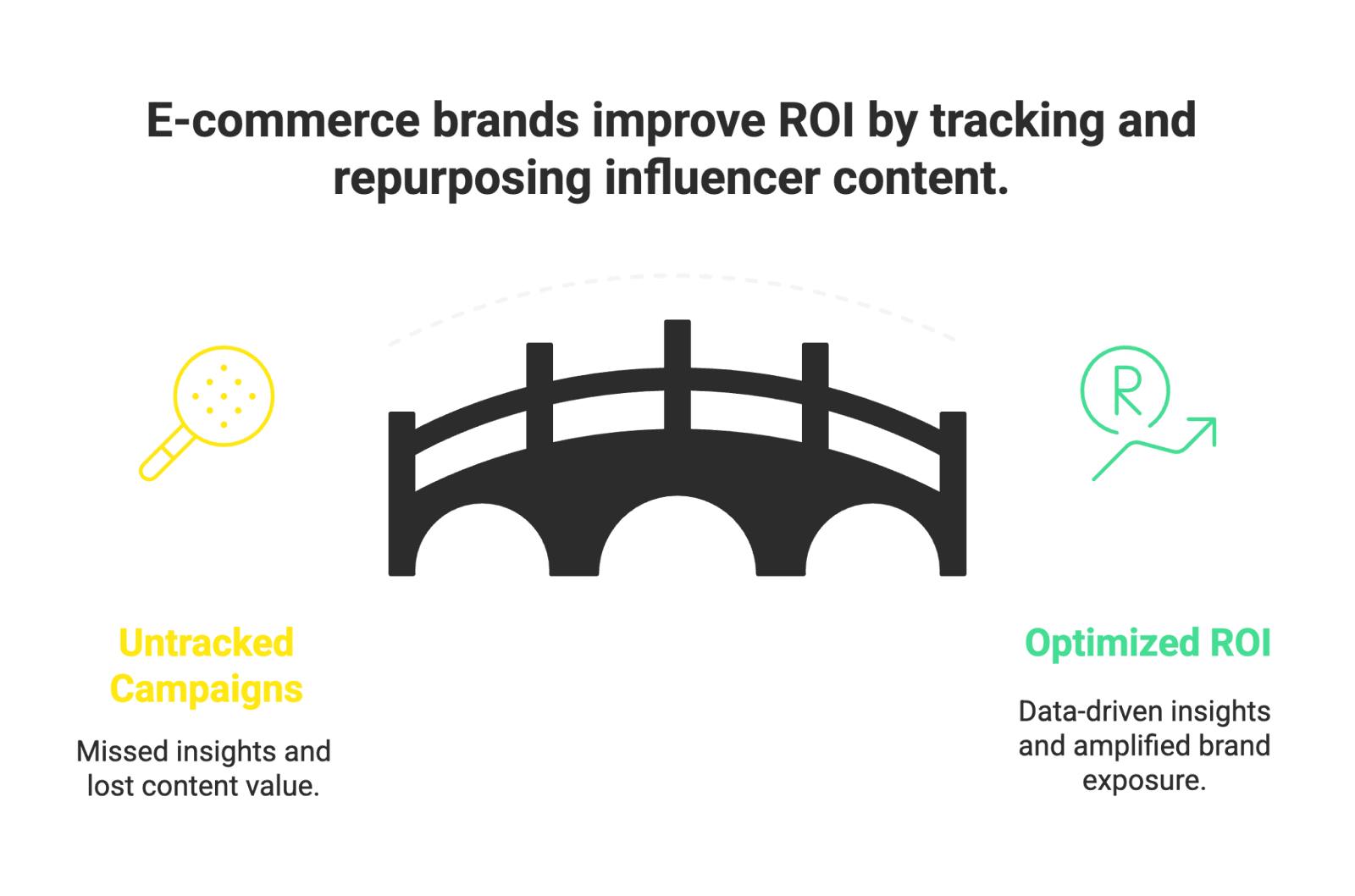
To grow as an affiliate, you want to constantly expand your viewership. TikTok provides built-in tools to help you reach more people – make sure to use them:
-
Hashtags
Use relevant hashtags on your posts, especially ones that are trending or niche-specific to your product. For example, if you’re promoting a DIY gadget, you might use #DIY, #LifeHacks, or a current trending tag like #AmazonFinds if it fits. Don’t go overboard – 3-5 well-chosen hashtags are better than 20 random ones. The algorithm will categorize your content based on those tags and show it to interested users.
-
Duets and Stitches
These are unique TikTok features where you can respond to or build on someone else’s video. You might stitch a video of someone complaining about a problem and then showcase your affiliate product as the solution. Or duet a video of someone using a product (if it’s a general video) and add your commentary. This not only leverages existing popular content but can get that content’s viewers to see your take.
-
Live Streams
Once you have enough followers (typically 1,000), you can do TikTok LIVE videos. Live streaming is powerful for selling – you could host a live Q&A about products you recommend, do real-time demos, or unbox new goodies. TikTok even allows adding product links in live streams if you’re in the affiliate program. Lives send notifications to followers and can appear on the For You page, helping you gain new followers too. If you have a big promotion or sale (like an affiliate product that’s discounted for a day), doing a quick live stream to hype it up can drive immediate sales. And viewers can ask questions, which you can answer on the spot – great for building trust and convincing fence-sitters.
6. Drive Traffic to Your Affiliate Links (Bio Links, Codes, and Beyond)
Creating awesome content is half the battle – you also need to convert viewers into clickers and buyers. TikTok’s not as link-friendly as some platforms, but there are ways to drive traffic effectively:
-
Link in Bio
We’ve mentioned it several times because it’s vital. Always assume many viewers don’t know how to find your link, so occasionally remind or show them. Some creators even include a quick screen recording in their video showing “Tap my profile and then the link” with an arrow – but this can be overkill in every video. Instead, you might say in the caption “➡️ Product link in my bio” or as a text overlay “(link in bio)” when you mention the product. Make it as easy as possible for an interested viewer to go from video to checkout.
-
First Comment
A smart trick is to post your own video and immediately leave a comment from your account with the call-to-action, then pin that comment. For example: “Get yours here 👉 [your link] (use code JANE20 for 20% off)”. While TikTok doesn’t allow clickable links in comments either, you can write a simplified URL or instruct them to copy-paste (not ideal, but sometimes necessary). Or just say “Link in bio” in the comment too. Pinning this comment will keep it at the top where everyone can see it without digging.
-
TikTok Paid Ads (Optional)
If you’re more on the brand side or you have a budget, you can consider boosting your best content with TikTok’s paid ads (like Spark Ads, which promote your organic post). TikTok’s ad platform allows precise targeting, but it can be pricey for small creators (often minimum budgets of $50–$100+ per day). Generally, individual affiliates might not buy ads for their videos, because it eats into your commission profits. However, sometimes brands will run your post as an ad (with your permission), which can greatly amplify reach – and if you have an affiliate deal, you’ll still earn commissions on those broader sales. This tends to happen if you’re working closely with a brand (more like a hybrid influencer-affiliate partner). For starting out, focus on organic tactics, as TikTok offers so much free reach if you nail the content.
At the end of the day, never assume people will seek out your link without prompting. Always include a clear path for the viewer: they’ve watched your cool video – now what? Tell them! Something as simple as a persuasive “Trust me, you’ll want to try this. [Link in bio]” can significantly bump up your click-through rate.
7. Track Your Performance and Optimize
Affiliate marketing is an ongoing game of optimization. As you start putting out content and sharing links, be sure to track how everything is doing. Most affiliate programs provide analytics – clicks, conversion rates, sales, etc. TikTok’s own analytics (available on Business accounts) will show you video views, watch time, and engagement. Use these data points to double-down on what works:
-
Identify Top-Performing Content
Look at which of your TikTok videos got the most views or engagement. Is there a pattern? Maybe your audience loves unboxing videos more than comedic skits, or vice versa. The content that works and aligns with product pushes – do more of that. Similarly, if certain videos got tons of comments like “where can I buy this?”, that’s a sign you hit a need. Consider making follow-ups or similar product features.
-
Track Clicks vs. Sales
It’s possible a video gets 1000 clicks on your link but only 5 sales. Or another gets 100 clicks but 20 sales. Conversion rate matters. Try to figure out why one converted better – was the targeting more on-point? Was the product more impulse-friendly? Use link shorteners or separate tracking IDs for each platform if you want to get granular (e.g., one Amazon Associates ID for TikTok bio, another for your YouTube link, etc., to see which platform drives more sales).
-
Refine Your Product Selection
If you’ve done a few promos, assess which products actually sold. You might find that, say, you pushed a $5 trinket and got many sales, but the commission was tiny – whereas a $50 item with fewer buyers made you more money. It could be more lucrative to promote higher-priced items that your audience is willing to buy. Or maybe a certain category (beauty products, for example) just doesn’t resonate as much as you thought, but tech gadgets do – then shift focus. Listen to audience feedback too: read the comments and DMs. If people ask “Do you have a recommendation for X type of product?”, that might be your cue for the next affiliate post.
Continuous improvement is the name of the game. The TikTok landscape can change quickly – new features roll out, trends shift, audience preferences evolve. By keeping an eye on your performance metrics, you can adapt your strategy and stay ahead of the curve. The great thing is you’ll get better at predicting what works over time, turning affiliate marketing on TikTok into a more steady (and potentially significant) income stream.
Common Mistakes to Avoid in TikTok Affiliate Marketing
Even with the best strategy, there are pitfalls that can undermine your efforts. Learn from others’ mistakes and steer clear of these missteps:
-
Promoting Irrelevant Products
One of the quickest ways to lose follower trust (and interest) is by pushing products that have nothing to do with your usual content or your audience’s needs. If you run a vegan cooking TikTok and suddenly promote a random tech gadget just because it has a high commission, people will see right through it. Stay in your lane and only recommend products that truly fit your niche and audience. Consistency builds a reputation as a curator rather than a salesperson.
-
Being Too “Salesy” or Inauthentic
TikTok users hate feeling like they’re watching an ad. If your content comes off as a blatant sales pitch or you’re overly polished and scripted, it will flop. Avoid infomercial-style language (“But wait, there’s more!”) or anything that feels spammy. Instead, focus on honest, personal takes. Share genuine enthusiasm or criticism. Authenticity is your superpower – don’t trade it for a quick buck. Also, never promote a product you don’t believe in; if people buy something on your recommendation and it’s junk, that backlash will hurt your credibility long-term.
-
Ignoring TikTok Culture/Trends
Posting as if TikTok were Facebook or a blog – e.g., using static images, long boring monologues, or ignoring current trends – will limit your reach. TikTok has a unique culture, and you need to speak that language. Use music, use effects, follow trends (when appropriate). Failing to adapt content to the platform is a common newbie mistake. It can make your videos invisible on the algorithm-driven For You page.
-
Giving Up Too Soon
TikTok can be unpredictable. You might post 10 videos and none of them gain traction – it’s easy to get discouraged. But often it’s the 11th video that suddenly goes viral. Many successful TikTokers went through a slow start. The key is to keep experimenting and improving. Don’t quit because you didn’t make affiliate millions in your first month. Evaluate what might be going wrong (content quality? product fit? posting times?) and adjust. Persistence is vital; each video is a new lottery ticket in the virality lottery (with skill improving your odds).
By being mindful of these common pitfalls, you can save yourself a lot of headache and keep your affiliate journey on the right track.
Conclusion to How to Become a TikTok Affiliate
TikTok affiliate marketing offers an exciting opportunity for micro-influencers, content creators, and brands alike to ride the wave of social commerce. With its enormous user base, engaging format, and evolving shopping features, TikTok blurs the line between entertainment and e-commerce like never before. By mastering the art of authentic content and smart promotion, even a small creator can generate significant income, and even a small business can generate big sales.
To recap, start by choosing the right niche and products, leverage TikTok’s unique tools (trends, hashtags, TikTok Shop), and always prioritize genuine engagement with your audience. It’s this authenticity and creativity that turns casual viewers into loyal followers – and loyal followers into paying customers of the products you recommend.
Both creators and brands should view TikTok affiliate partnerships as a way to build real connections with the community. For creators, it’s about sharing cool finds and making recommendations that genuinely help or delight your followers (with the bonus of earning on the side). For brands (including many Amazon sellers out there), it’s about empowering passionate fans to spread the word, effectively letting your customers and micro-influencers do the marketing via relatable UGC content.
In the fast-moving world of TikTok, keep experimenting, stay updated on trends, and most importantly, have fun with it! Some of the best affiliate success stories come from creators who started with a hobby or a passion for making videos – the monetization followed naturally. If you maintain that mindset of delivering value and enjoyment first, the commissions will follow.
Now that you’re armed with this knowledge, it’s time to take action. Brainstorm some product ideas that you love, fire up the TikTok app, and start creating. Who knows – your next TikTok might just go viral and kickstart your journey as a successful TikTok affiliate.
Happy TikToking and happy earning! 🚀

By William Gasner
CMO at Stack Influence
William Gasner is the CMO of Stack Influence, he's a 6X founder, a 7-Figure eCommerce seller, and has been featured in leading publications like Forbes, Business Insider, and Wired for his thoughts on the influencer marketing and eCommerce industries.
Want new articles before they get published? Subscribe to our Awesome Newsletter.
stack up your influence
turning creativity into currency
our headquarters
111 NE 1st St, Miami, FL 33132
our contact info
[email protected]
stack up your influence
turning creativity into currency
our headquarters
111 NE 1st St, 8th Floor
Miami, FL 33132


